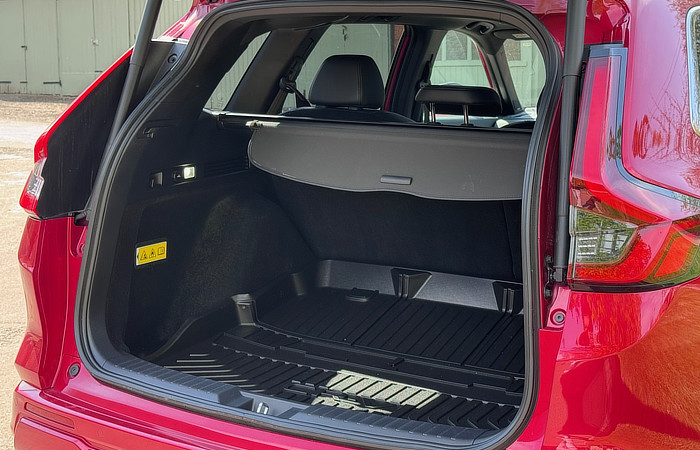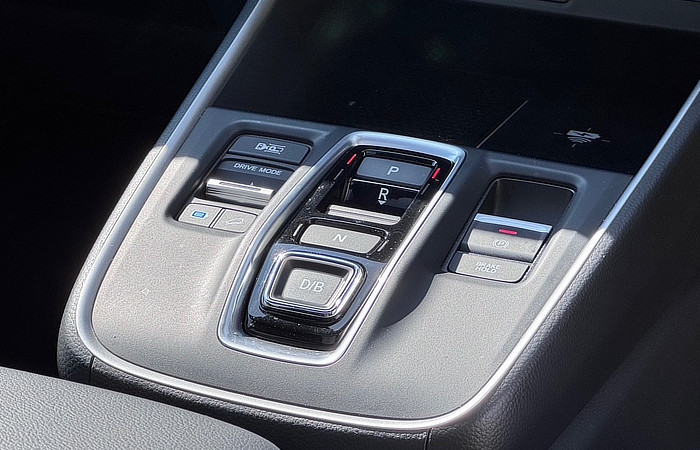By Jay Khan, May 4, 2025
Quick Facts
Model spec: Honda CR-V Plugin Hybrid Price: £50,000.00 Engine: 2.0 litre Petrol + Electric Motor
BHP / Torque: 278 / 366 Max Speed: 121 CO2: 19g/km 0-62mph: 9.4 seconds
Economy/Range: 67mpg combined Tax: £30/year
I’ve driven a lot of PHEVs over the years. The first-generation models were contradictory by nature—an internal combustion engine fused with an electric motor and battery pack. The idea was to pollute less by using the EV range (typically just 15 miles back then) for short trips, while relying on the ICE for longer journeys. In theory, it made sense. In practice, it was like mixing oil and water—it just didn’t work. Once the EV range was depleted, you were left lugging around dead weight. You were better off with a traditional petrol or diesel car.
PHEVs lost their relevance with the rise of a new wave of electric vehicles, led by Tesla and now joined by a growing force of Chinese EVs. So you’d think PHEVs were on their way out, right? Not quite. The automotive world is more complex than that—PHEVs are making a comeback. I was sceptical, especially about the Honda CR-V PHEV. I expected it to be just another compromised hybrid.

But this is Honda. And Honda knows what it’s doing. After over two decades of building hybrids, they’ve poured that experience into what is arguably the most effective PHEV on the market. This thing runs as much on magic as it does on Honda’s engineering expertise.
Exterior
No complaints here. The latest CR-V is more mature, sleek, and refined. It looks classy and exudes confidence. Honda’s new design language is definitely a step in the right direction.

In the UK, the CR-V is currently available in three trims, starting at £47,350. The PHEV version starts at £49,930 and sits at the top of the range. Unlike other AWD trims, it’s front-wheel drive only. However it comes fully loaded with all the creature comforts and features you could ever need:
LED headlights with adaptive dimming, a multi-view camera, keyless entry, leather seats, heated front and rear seating, a heated steering wheel, Bose sound system, electrical seats, panoramic sunroof, and a digital driver’s display. The list goes on.
The Interior
It’s big on the outside and spacious on the inside. While every car has its quirks, there’s not much to criticize here. The infotainment system is decent and wirelessly supports both Apple CarPlay and Android Auto. The digital driver’s display is sharp, readable, and well-presented.

The new interior design echoes the exterior’s understated boldness. For those who aren’t fans of fully digital interfaces, Honda’s retained physical buttons and dials for climate control—a nice touch.

Without going into geeky details, the rear boot space is large enough for everyday needs—and it’s IKEA-proof when the rear bench seats are folded completely flat.

The PHEV battery pack and overall EV packaging don’t seem to noticeably reduce the boot space capacity.

Build quality is generally excellent, though the centre console (where the gear selection buttons are) has a bit of play. Otherwise, it feels solid and well put together.

If I had one complaint, it would be the seating comfort. After an hour or so into a 250-mile trip, the seats began to feel uncomfortable.

Honda might consider offering a premium seat option, or just design one truly comfortable seat to rule them all.
Drive
The CR-V PHEV combines a 148 bhp 2.0-litre petrol engine with a 188 bhp electric motor, for a total system output of 240 bhp and 366 Nm of torque. Its 17.7 kWh lithium-ion battery provides an official EV range of up to 50 miles—about 4 kWh more than a Tesla Powerwall, for context.

At 2,430 kg is heavy which will impact overall efficiency… to a degree. Handling reflects this weight: the CR-V leans toward understeer and shows some body roll in corners, but it remains composed under braking. You do feel the extra heft compared to the standard hybrid, but it brings a surprising benefit—greater motorway stability.
Steering is artificially weighted—it feels safe and predictable but lacks feedback. That’s fine for an SUV. If you want sports car steering feel, buy a sports car.

Honda’s Lane Assist is enabled by default. While I usually like lane-keeping systems on motorways, I found myself switching this one off. The software still needs refinement before it earns my trust. It also featured a parking assist system, or Park Pilot, but I didn’t use it—I usually just drive around the car park looking for the easiest and widest parking bay!
Efficiency
Initially, I wasn’t impressed by the fuel gauge readout: 315 miles of petrol/gasoline range and only 40 miles of EV range—10 short of the advertised 50. But Honda had a trick up its sleeve: genuine efficiency.
There are the usual drive modes, plus a “B” mode for enhanced regenerative braking. I prioritized B mode and used it consistently instead of standard Drive, as it activates regeneration and allows for near one-pedal driving. Using the steering wheel paddles, you can toggle regen through five levels—from 1 (light) to 5 (strong).

Once the battery depletes, the CR-V PHEV I believe it goes into “Hybrid mode” using reserve battery power to continuously inject small amounts of EV power and achieving 40 mpg on a combined journey. Even in Sport mode with aggressive driving, it only drops to around 38 mpg. Around town, the CR-V excels—returning 50–60 mpg.
If you’re working from home or just doing school runs and errands, you might never need to refuel. The battery recharges in 2.5 hours from zero using a dedicated home AC wall charge, 7.7 when using a 3-pin wall socket.

At motorway speeds, with a depleted battery, it can still run on EV power for 3–4 miles before switching back to hybrid and recycling reserve power. On a 250-mile round trip, I started with 268 miles of petrol and 22 miles of EV range. I expected to refuel at least twice—but I never did. I got home with 165 miles of petrol range still showing. I’m still trying to figure out the math on that one.
The Verdict
I’m still not completely sold on PHEVs, as pure EV battery technology is advancing rapidly, and range anxiety is likely to become a thing of the past. If your typical use case involves mostly short trips—around 30 to 50 miles a day—then going fully electric makes a lot of sense. That said, I have to admit, the CR-V PHEV is a home run.I expected frustration and inefficiency. Instead, I found a vehicle that consistently delivered—not just on fuel economy, but on comfort, practicality, and smart engineering.

Sure, it’s not fast. But it’s fast enough. It’s spacious, well-equipped, thoughtfully built and quiet on the move. While it may not be the sharpest handler, it offers a calm, comfortable ride that suits its mission perfectly.
Yes, I’m filling column inches here—but Honda has built the best PHEV on the market right now. If you’re on the fence about going fully electric, the CR-V PHEV offers the best of both worlds.

